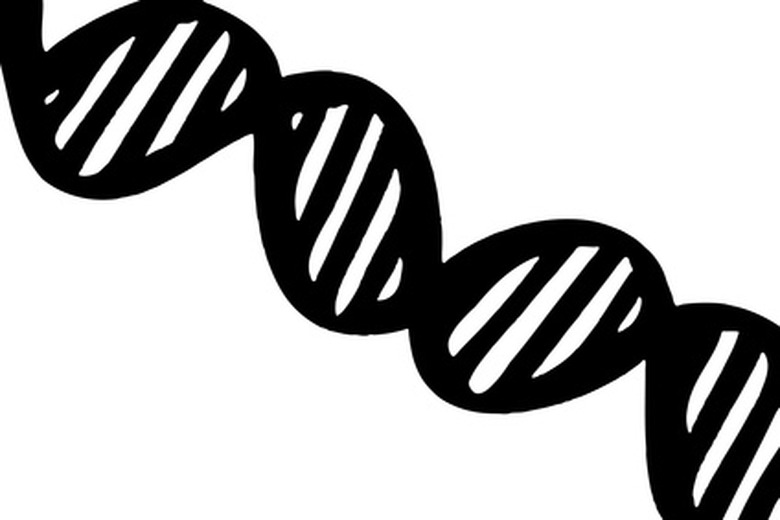How Is Recombinant DNA Made?
Recombinant DNA (deoxyribonucleic acid) is a synthetic type of nucleic acid created by linking DNA sequences together that would not naturally exist under normal circumstances and environmental conditions.
The process of making recombinant DNA is usually done with a recombinant plasmid. Specifically, it's made by an advanced DNA technology procedure in biology and genetics known as gene cloning. Recombinant DNA is put into a cell, which then produces a completely new protein, and is used to synthesize drugs, antibodies, or specific proteins for research only.
Introduction on Recombinant DNA Technology
Introduction on Recombinant DNA Technology
DNA from a donor organism or biological source is first extracted from cells and then subjected to a cutting process known as enzymatic restriction. This generates fragments of DNA that contain the gene or genes of interest. These fragments can then be "cloned" (i.e., inserted) or stuck onto fragments from the recipient organism.
They are next inserted into larger DNA molecules (a "recombinant plasmid"), which are placed into a bacteria and allowed to multiply. The recombinant DNA is then recovered and verified.
Read more about the pros and cons of recombinant DNA technology.
DNA Isolation
DNA Isolation
DNA must first be extracted and purified from other cellular molecules, such as ribonucleic acids (RNAs), proteins, and structures such as cell membranes. For cloning purposes, DNA is obtained from the nucleus and is known as "genomic DNA." One common method for DNA extraction is by ultracentrifugation of cell components in a density gradient made up with ethidium bromide in cesium chloride.
Alternatively, a series of alkaline and salt-buffer washes can also be used to recover the DNA. Once this is precipitated and cleaned of all other unwanted contaminants, the DNA can be cut into fragments.
Restriction Enzyme Digestion of DNA
Restriction Enzyme Digestion of DNA
Restriction enzymes are enzymes that cut up very specific DNA sequences; they are used to create unique DNA fragments. This process ensure that no inaccurate, incorrect, or unwanted sequences are generated and become accidentally incorporated into the final recombinant DNA, which can result in both experimental failure and cell death.
To generate the desired DNA fragments, a specific single (or combination of) enzyme(s) is used to cut up or digest the DNA. The fragments are then purified by gel electrophoresis, which separates them from the unwanted DNA. A cruder DNA technology method simply involves mechanical shearing, which rips up the longer DNA segments into smaller ones that can be used for cloning.
DNA Ligation
DNA Ligation
Ligation is the process of sticking or joining together the donor and recipient (or vector) DNA fragments to create a recombinant plasmid DNA molecule. Ideally, the restriction enzymes chosen to create the fragments would have been very carefully thought out and designed such that they allow these bits to be put together like a jigsaw puzzle.
To do this, restriction enzymes that produce compatible "sticky ends" are preferred, such that all compatible fragments will naturally join with each other. Otherwise, the DNA ligase enzyme can be used to join the DNA segments with phosphodiester linkages.
Recombinant DNA Replication
Recombinant DNA Replication
The process of transformation or heat shock is used to put the recombinant DNA molecule into a host bacterial cell, which can then generate many copies of the synthetic DNA. These bacteria are grown on agar plates, cultured up in special bacterial broths, and then lysed in order to release the recombinant DNA. Finally, the DNA can be verified by DNA sequencing, functional experiments, and restriction enzyme digestion.
Uses for Recombinant DNA
Uses for Recombinant DNA
Recombinant DNA technology is used for everything from academic lab experiments to creating pharmaceutical drugs. It's also an important part of DNA sequencing and gene identification.
You can read more abut uses for this DNA technology here.
Read more about the difference between recombinant DNA and genetic engineering.
References
- "Modern Genetic Analysis"; AJF Griffiths, WM Gelbart, RC Lewontin, JH Miller; 2002
- "Recombinant DNA: genes and genomes : a short course"; James D Watson; 2007
- "Essential cell biology: an introduction to the molecular biology"; Bruce Alberts; 1998
- "Gene Cloning and DNA Analysis: An Introduction"; TA Brown; 2010s
Cite This Article
MLA
Owyoung, Palmer. "How Is Recombinant DNA Made?" sciencing.com, https://www.sciencing.com/recombinant-dna-made-6193032/. 30 July 2019.
APA
Owyoung, Palmer. (2019, July 30). How Is Recombinant DNA Made?. sciencing.com. Retrieved from https://www.sciencing.com/recombinant-dna-made-6193032/
Chicago
Owyoung, Palmer. How Is Recombinant DNA Made? last modified August 30, 2022. https://www.sciencing.com/recombinant-dna-made-6193032/
